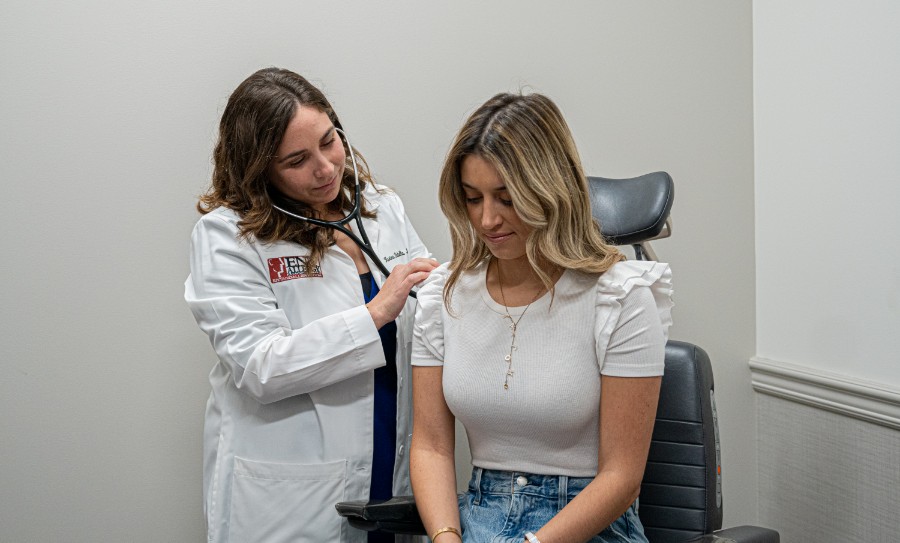
by Robert Sporter, M.D.
Many patients suffer from contact dermatitis, or skin allergies. These patients experience a rash after direct contact with a substance to which they are allergic. This rash may develop hours or even days after the exposure, and is typically itchy. The rash is often red and inflamed, and may have tiny blisters filled with clear fluid.
Contact dermatitis does not typically improve with antihistamines, though they may help the itching somewhat. The rash is likely to improve with steroid creams, though prescription-strength steroid creams or ointments may be necessary. Severe cases may be treated with oral steroids.
The best treatment for contact dermatitis is to identify the triggers and avoid exposure. Numerous allergens may cause contact dermatitis and are often found in cosmetics, jewelry, personal care products, household products, and materials used for hobbies or at work. Contact allergies may develop over time, so products which you have used for years may now be causing a reaction. A patch test is often performed to identify contact dermatitis triggers.
At ENT and Allergy, our allergists have access to hundreds of allergens that can be applied for patch testing. A patch test is often prepared specifically for you, based on the nature of your skin condition and types of exposures. A standard patch test will evaluate for reactions to common metals, fragrances, beauty products, and chemicals found in common household and and occupational products. If needed, patch testing can be performed for additional allergens such as cosmetic materials, haircare materials and dyes, dental products, metals, woodworking and rubber working supplies, plastics and glues, and medications such as anesthetics and steroids.
Patch tests are typically applied to the skin on a patient’s back. After a patch test is applied in the office, the patient will return in two days to have it removed and an initial evaluation will be performed. The patient often returns after two additional days for a final reading of the test. This type of schedule is necessary as it often takes two to five days for the skin to react to the allergens.
After your patch test, your allergist will review the results and provide you with information on your contact allergies. We can provide you with helpful literature which reviews the chemical name of the allergen, as well as alternative names and where the allergens are often found to assist you in avoiding these materials. Avoidance of your triggers usually leads to marked improvement, though it may take weeks for the condition to resolve completely.
Dedicated to Providing Convenient and Exceptional Care

Less Sick Days, More Living

